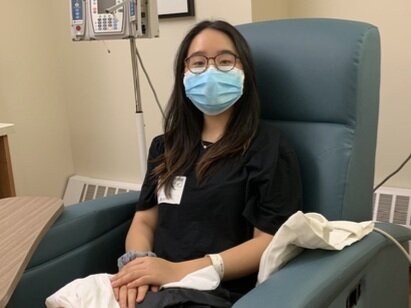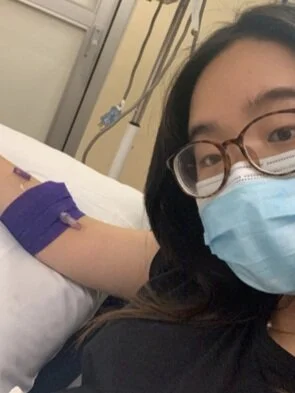TW: upsetting emotions, house fire, PTSD, mental health
Every person on earth has to go through the rollercoaster called life, facing major ups and downs during the course of their time here. Having a chronic, debilitating illness does not save you from facing other major life-altering events. Managing these events and getting up every day is a life skill that one builds over time.
In Spring of 2020, as the COVID-19 pandemic ravaged the world, I sat locked up safely in my apartment in New Delhi thinking of what to eat as my refrigerator was devoid of any vegetables or fruits. Delhi was under lockdown, and the few times we were allowed to go out to shop, I would have to go when it wasn’t too crowded (due to being on immunomodulators and with no sign of vaccines), and reach the grocery stores to find all unprocessed stocks of produce gone. I weighed my remaining options and it came down to cooking up hot meals of oatmeal or khichdi. I didn’t want hot meals since the Indian summer heat was well on its way, and all the air conditioners in the home were nonfunctional.
Because of the pandemic and subsequent lockdowns and curfews Delhi was facing, all services (like the local electrician service) stopped. After many days of desperation in the heat though, I just couldn’t take it anymore. I finally arranged for the electrician to check the air conditioners out. 10 minutes before he was due, I thought of prepping for him to see they were not working. I put one of the air conditioner’s plug into the socket, took the remote and turned it on. A strange and loud whirring noise took me by surprise, and I stared to see what would happen next. About 5 seconds later, I saw smoke rising out form the top, initially thinking it was the vapor from the heat in the room. Another few seconds later, there was a bright yellow light and, lo and behold, a fire had started. My reaction should have been to freak out but I was just SO fatigued and thought “I can’t deal with this right now.” I half-thought about going back to the living room to finish a meal I had just finished cooking for myself and letting the fire be, but reality caught on and I started to freak out when I remembered I lived in an apartment so the fire was going to spread to other homes.
My reaction should have been to freak out but I was just SO fatigued and thought “I can’t deal with this right now.”
My first instinct was to tell my parents but they were posted in a remote country where most of the popular calling channels were blocked. I tried calling my mother through an app that hanged and would not cooperate. With the call still ringing, I reached for the main door to warn the neighbors but ran back inside to save valuable papers first in the room with the fire. I entered the room to see the thick smoke spreading faster than I could recall what to collect and where it was. Before leaving, I took a deep breath and removed the plug from the socket, turned it off, opened the windows of the room and heaved a sigh of relief the damn air conditioner hadn’t fallen on top of my head. I quickly accepted I needed to leave my valuables, meal and home behind, and ran out to tell the neighbors who called the firefighters. With the pandemic in full swing, the firefighters took a while to arrive and as they opened the main door, a thick cloud of black smoke engulfed us. None of us could see ½ meter ahead of us. The brave men took some time, but eventually extinguished the fire. I was very fortunate to not lose too many valuables, but the entire apartment was left in sticky black soot, with little soot particles falling like rain everywhere around me. It felt impossible to clean up. It was impossible to live there.
After the fire, the next challenge was to find a place to live. Find a place to live, during a pandemic, with a suppressed immune system – easy. I didn’t have any immediate family in the state, and strict curfew rules made it nearly impossible to travel outside the state. The first few nights after the fire, my amazingly kind neighbors took me in but those nights were rough. For several nights I heard the whirring sound and jumped up to save myself from my inaction. After this event, my extraintestinal symptoms like brain fog and fatigue worsened drastically. Eventually, my cousins from the adjoining state arranged for me to come live with them, taking some time for official permissions.
Before leaving, I felt a responsibility to rescue the apartment and stuff my parents had painstakingly collected over the years from their international postings. With no available cleaning services in sight, I was soon wrapped up in what seemed like an infinite loop of wiping one product after another, only to redo the entire process again as soot resettled on it. The walls looked like they’d had a new black paint job, and soot cobwebs danced at every corner. Yet clean I did, through a physical and mental haze, and managed to wrap everything except the furniture up. I remember having to wash my hands after every new item I touched because the sticky soot made it impossible to clean. By the end of the 3-day rigorous clean up, my hands were very dry and semi-permanently stained black. It took me multiple weeks to rid myself of the stains when I moved to my cousin’s home.
My mental health deteriorated significantly over the summer. As a result, my extraintestinal symptoms worsened. I was sleeping for most of the hours of the day, and spent the rest in bed. I was so fortunate to have empathetic family members that took care of me and didn’t judge me for my invisible struggles. But I felt I’d had enough and needed a breather. Literally. Multiple times a day, I would feel like my chest was tightening up, my nose felt blocked throughout the day and I lived in a cloudy haze. As services slowly opened up, a mature me didn’t want to dismiss my new symptoms and I immediately booked an appointment with my GI, who recommended some blood tests and we found that everything came back normal. In fact, those blood tests were probably the best I’d had in a long time. But my situation was not getting better, only worse. Ultimately, I managed to get on a one-way flight to my parent’s posting passing through 2 continents and 3 flights, while all international airports were minimally functional. I slept for 14 hours straight after I landed.
At every step of the pandemic, whether it was arranging a steady stock of medication or food through hoarding culture, fighting a house fire and acting responsibly through the haze, cleaning up (on a one-man team) what resembled a coal mine, or taking my symptoms seriously and arranging to get my illness checked, all with a suppressed immune system, makes me appreciate how far I have come at managing life events.
When I reflect back at this time, I feel incredibly proud of myself and tremendously thankful to my empathetic neighbor and family members. At every step of the pandemic, whether it was arranging a steady stock of medication or food through hoarding culture, fighting a house fire and acting responsibly through the haze, cleaning up (on a one-man team) what resembled a coal mine, or taking my symptoms seriously and arranging to get my illness checked, all with a suppressed immune system, makes me appreciate how far I have come at managing life events. Most importantly, I am proud of the way I got up every single day and faced every new impossible step, keeping my hope alive. My hope was well protected by my kind neighbor who graciously took me in, fed me, and talked me through my experience, and my loving family who did impossible things just to keep me safe and support me through the cloudy aftermath. I’ve learnt that managing major life-altering events like these are possible with individual grit, determination and an understanding support system who stop you from succumbing into a negative spiral. With IBD, a major life skill is prioritizing things you can control in events you can’t. In these trying times, I did my best to keep to my safe foods, take all my medications on time, limit other stressors, and stay on top of my illness by getting it checked and keeping my GI in the loop. In terms of PTSD, I am still very nervous around air conditioners. At this moment, I can’t afford a therapist and so do my best to educate myself on PTSD and healthy relaxing coping mechanisms.




























